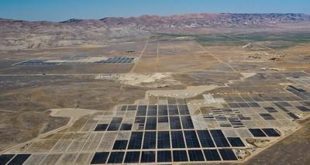The solar investment tax credit (ITC) provisions will:
· Extend for 8 years the 30-percent tax credit for both residential and commercial solar installations;
· Eliminate the $2,000 monetary cap for residential solar electric installations, creating a true 30-percent tax credit (effective for property placed in service after December 31, 2008);
· Eliminate the prohibition on utilities from benefiting from the credit;
· Allow Alternative Minimum Tax (AMT) filers, both businesses and individuals, to take the credit;
· Authorize $800 million for clean energy bonds for renewable energy generating facilities, including solar.
The solar tax credits were originally enacted in the 2005 and have created unprecedented growth in the U.S. The amount of solar electric capacity installed in 2007 was double that installed in 2006.
“Over the last 2 years, these tax credits have turned the solar industry from a small, cottage industry into an economic engine for America. Electricians, plumbers, roofers and construction workers can now get back to work. These jobs are the backbone of the American economy and the solar industry is creating them at a time when they are needed the most,†said Resch.
According to a new economic study by Navigant Consulting, Inc., the 8-year extension of the ITC will create 440,000 permanent jobs and unleash $325 billion in private investment in the solar industry. This study did not factor in elimination of $2,000 monetary cap on the residential credit, so the actual job creation and investment could be even greater.
“This is a big boost for the residential market in particular, allowing homeowners to contribute to our nation’s energy independence,†said Efird. “It also opens the floodgates for building large, utility-scale solar power projects that need longer timeframes to complete.â€
To date, there are 27 such utility-scale solar power projects totaling 5,400 megawatts of power in various stages of development; most were on hold due to uncertainty surrounding the expiring tax credits.
Because solar energy components are manufactured near their markets, this extension will create manufacturing and installation jobs in all 50 states. The states that will enjoy the largest economic boost are California, Florida, Arizona, New Mexico, Nevada, New Jersey, Massachusetts, New York, Oregon, and Washington.
Similarly, the economies of Pennsylvania, Michigan, Ohio and the rest of the Great Lakes region will grow significantly as a result of the extension. This area of the country has suffered greatly from a huge decline in jobs in the automotive and traditional manufacturing industries.
According to the same study, more than 28 gigawatts of electricity will be produced from solar energy by 2016 – enough to power more than 7 million homes.
“Success has not come easy. It required a strategic campaign that included dedicated SEIA staff, a committed board, and active membership all focused on one goal. It took seven votes in the House and 10 votes in the Senate, but in the end, Congress came through. This effort has established SEIA as a major energy player on Capitol Hill,†said Resch. “We have a lot of opportunity in front of us and will be back next year to work on critical issues such as transmission infrastructure, renewable electricity standards, and combating global warming.â€
###
Contact:
Monique Hanis, 202-682-0556, ext. 4, [email protected]
Jared Blanton, 202-682-0556, ext. 96, [email protected]
Mark Sokolove (Tiger Communications), 703-302-8382, [email protected]
Background Resources:
9.15.08 Navigant Consulting, Inc. “Economic Impacts of Extending Federal Solar Tax Creditsâ€:
http://seia.org/galleries/pdf/Navigant%20Consulting%20Report%209.15.08.pdf
H.R. 1424 Bill Summary:
http://seia.org/galleries/pdf/HR_1424_Solar_Memo.pdf
H.R. 1424 Full Bill Text:
http://seia.org/galleries/pdf/Fin_Stab_Bill_Text.pdf
Background on the ITC:
http://seia.org/cs/federal_issues/itc_resources
2007 Solar Energy Industry Year in Review:
http://seia.org/galleries/pdf/Year_in_Review_2007_sm.pdf
House Solar Voting Scorecard:
http://seia.org/galleries/pdf/House_Score_Sheet_110_Congress_new.pdf
Senate Solar Voting Scorecard:
http://seia.org/galleries/pdf/Senate_Score_Sheet_110_Congress.pdf
About SEIA:
Solar Energy Industries Association is the national trade association of 750 solar energy manufacturers, project developers, distributors, contractors, installers, architects, consultants and financiers. Established in 1974, SEIA works to expand the use of solar technologies in the global marketplace, strengthen research and development, remove market barriers, and improve education and outreach for solar. Learn more at www.seia.org.
 Alternative Energy HQ solar power for homes, wind energy, and bio fuel issues
Alternative Energy HQ solar power for homes, wind energy, and bio fuel issues






